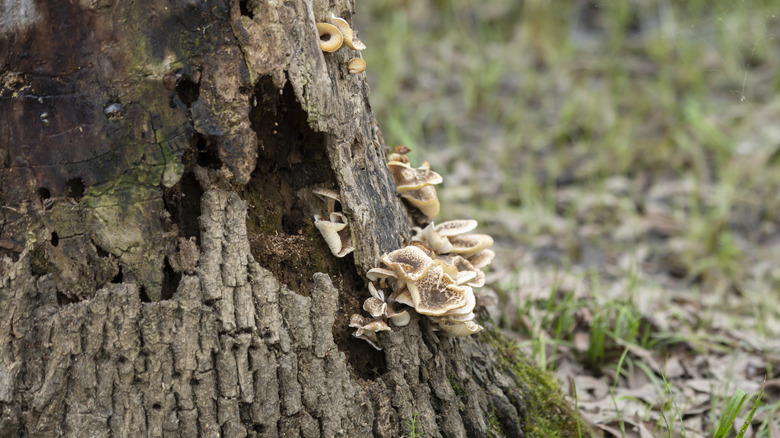What To Do If A Tree From Your Yard Falls Into The Road Or Sidewalk
Some days, nature is calm and peaceful, while on other days, it can be wildly unpredictable. Tropical storms or hurricanes can leave your majestic oak or maple tree sprawled across the sidewalk. When a tree gives in to nature's force, that's on nature, not you. Storm-felled trees are treated as an "act of God," meaning the responsibility shifts away from the homeowner because you can't be blamed for the weather. However, there's a small yet important distinction here regarding public versus private roads. If a tree from your yard ends up blocking a public road or sidewalk, the city is usually responsible. The first thing you need to do is contact your municipality to report the obstruction. But if the same tree tumbles into a private road, then the responsibility may fall on you, and you'll need to arrange for its removal yourself.
Basically, if there's a fallen tree laying in your street, the city wants it cleared just as much as you do. They're responsible for keeping public roads safe and passable, and that includes clearing debris as fast as humanly possible. It's in everyone's best interest — yours so you can get your routine back, and theirs because blocked roads create issues they absolutely don't want. So, when you make that call, you're essentially helping the system do exactly what it's designed to do.
When you're responsible for a fallen tree and how to handle it
Most of the time, nature takes care of its own, but sometimes you're left holding the branch (literally). If a tree from your yard falls onto a private road, that's squarely on your plate. Unlike public streets, private roads don't have municipal crews standing by with chainsaws and trucks. That means you need to handle its removal, which may mean reaching out to professional tree removal companies to get quotes. This is when you'd need to document everything by taking clear photos of the fallen tree and any associated damage. These snapshots will be crucial in determining if your homeowners' insurance can cover some or all of the costs.
Further, if the tree was unhealthy or clearly neglected and you didn't address it, the liability may fall on you. Similarly, if you decided to cut down a tree yourself and it fell in the wrong direction, well ... that's a tough lesson in hiring professionals. At the end of the day, the single most important thing every homeowner can do is make sure they have adequate homeowners' insurance that covers storm damage and tree-related mishaps. It's also important to regularly inspect your trees. Tree removal is often the right decision for your yard if the tree is showing signs of decay. Because while you can't be blamed for bad weather, you can be blamed for neglect.

